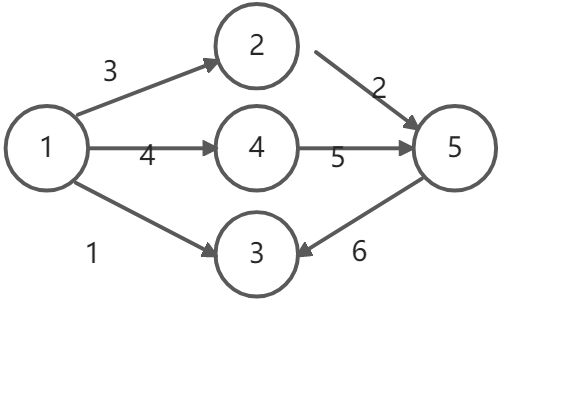- 主要结构:
- 初始化
- 遍历点的边
- 新添加一条新的边
- 总结
- 题目
- L2-038病毒溯源 :存图 | dfs">L2-038病毒溯源 :存图 | dfs
可以说该方法的前身是 邻接矩阵和邻接表,但是都有一些差强人意,于是就有大佬研究出了这么个数据结构,我觉得可以理解为 数组模拟链表
[
](https://pintia.cn/problem-sets/994805046380707840/problems/1386335159927652361)
主要结构:
struct E{int to,w,next;}Edge[maxn];int tot,Head[maxn];

邻接表 :

head就是这一块

初始化
int main(){//初始化memset(Head,-1,sizeof Head);}
有人习惯用 -1 作为空的标志,有人习惯用 0 ,这里我使用 -1
遍历点的边
遍历从 u 出发能够”一步”到达的点或者说是 边
void traversal(int u){//遍历从 u 出发能够"一步"到达的点或者说是 边for(int i = Head[u];~i;i=Edge[i].next){int v = Edge[i].to,w=Edge[i].w;//do something}}
新添加一条新的边
void addEdge(int u,int v,int w){//第 tot 条边的u->v,长度为 wEdge[tot].to = v;Edge[tot].w = w;//让之前 u 作为起点的最新添加的一条边 作为 第 tot 条边的下一条边,使其序号记为第 tot 条边的 nextEdge[tot].next = Head[u];//更新,现在 u 作为起点的 最新添加的一条边 的序号 更新为 tot;tot++,为下一次添加边做准备Head[u] = tot++;}
head[1] 就是 1 这个点后面的 最新添加的一条边的序号,插入一条新边时可以理解为 头插法
注意:
- 红色部分其实是不存在的的,只有边的序号(tot)、点的 head 、边的 next,使各条边联系在一起
- tot :边的序号,全局的,每次新增一条边之后都有 tot++ ,为新增下一条新边做准备。
总结
链式前向星其实就是一个 简化版的 好写一些的 易用的 邻接表
题目
L2-038病毒溯源 :存图 | dfs
#include <iostream>#include <cstring>#include <algorithm>using namespace std;const int N = 10010,M = 10010;int n;//结构体拆为三个数组了,因为没有权,也就没有wint h[N], // 对于每个点k,开一个单链表,存储所有k可以走到的点。h[k]存储这个单链表的头结点e[M], //e[idx] : 第idx条边的终点ne[M], //ne[idx] : 以第idx边的起点作为起点 的 下一条边idx=0;int son[N];//每个点的儿子bool st[N];void add(int a,int b){e[idx] = b,ne[idx] = h[a],h[a] = idx++;}int dfs(int u){int res = 0;//当前往下走的最长路径son[u] = -1;for(int i = h[u];i!= -1;i = ne[i]){int j = e[i];int d = dfs(j);if(res < d) res = d,son[u] = j;else if(res == d) son[u] = min(son[u],j);}return res + 1;}int main(){memset(h,-1,sizeof(h));//设置邻接表的表头scanf("%d",&n);for(int i = 0; i < n; i++){int cnt;scanf("%d",&cnt);while(cnt--){int x;scanf("%d",&x);add(i,x);//连接一条从i到x的边st[x] = true;//x有父节点}}int root = 0;while(st[root]) root++;//找父节点printf("%d\n",dfs(root));printf("%d",root);while(son[root] != -1){root = son[root];printf(" %d",root);}return 0;}

